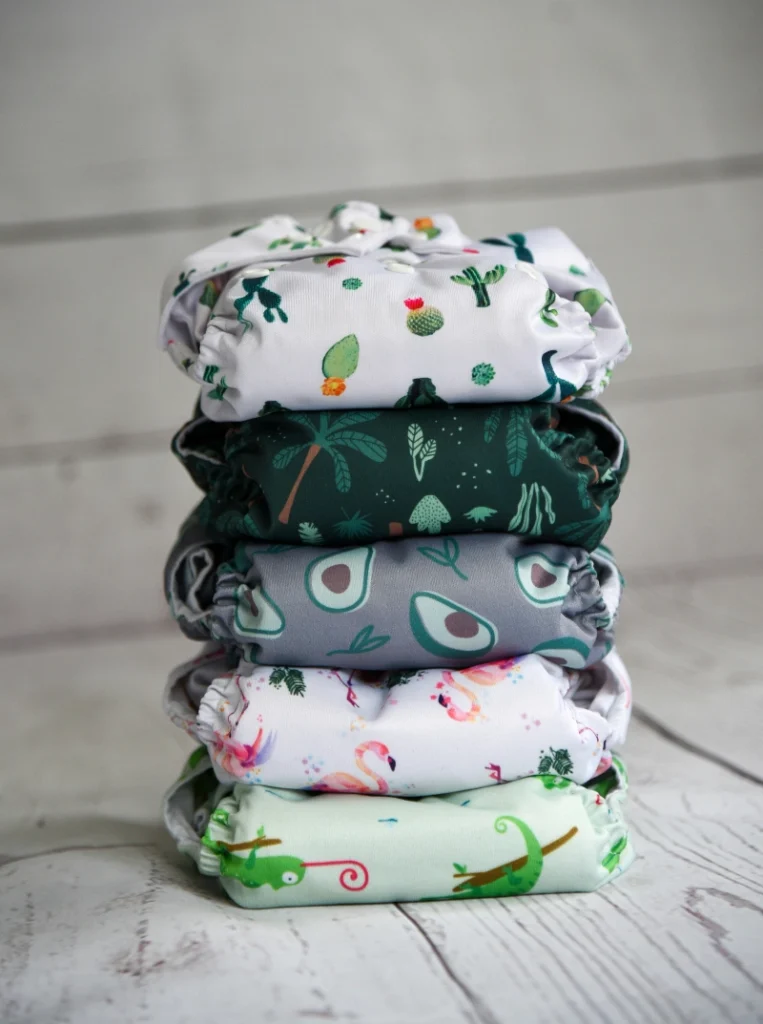Living a quiet, intentional life often means making thoughtful, countercultural choices. Cloth diapering is one of those choices. Whether you’re drawn to it because of stewardship, savings, or keeping your baby’s skin chemical-free, it’s a practice that aligns with caring for both your home and God’s creation.
In this post, I’ll walk you through everything you need to know to get started: the different types of cloth diapers, how to wash them, what products to use (and avoid), the pros and cons, and why our family chooses Mama Koala.
Why Choose Cloth?
As Christian women seeking to live faithfully and simply, our choices reflect our values. Cloth diapering offers a quiet kind of resistance to waste, excess, and disposability—not just of products, but of time, attention, and care.
Some reasons families choose cloth diapers include:
- Financial stewardship: Cloth can save families hundreds over time.
- Environmental care: Fewer disposables in landfills.
- Healthier for baby: No harsh chemicals, fewer rashes.
- Intentional rhythms: Establishing daily routines that reflect attentiveness and care.
Types of Cloth Diapers
Understanding the basic types can help you choose what works best for your lifestyle and budget.
| Type | Description | Pros | Cons |
| Pocket Diapers | A waterproof shell with an inner pocket where absorbent inserts are placed. | Customizable absorbency, quick drying. | Requires stuffing after each wash. |
| All-in-Ones (AIOs) | Everything is sewn together, functioning like a disposable diaper. | Easy to use, daycare-friendly. | Longer drying time. |
| All-in-Twos (AI2s) | A waterproof cover with snap-in or lay-in inserts. | Fewer covers needed, quick changes. | Inserts may shift with movement. |
| Prefolds with Covers | Flat cotton diapers folded and secured with a cover. | Budget-friendly, very absorbent. | Learning curve with folding and fastening. |
| Fitted Diapers | Shaped absorbent diaper requiring a cover. | Excellent for nighttime. | Bulky and slower to dry. |
Our family uses pocket diapers, and we highly recommend Mama Koala for their quality, affordability, and thoughtful design.
Why We Use Mama Koala
Mama Koala pocket diapers are a favorite in our home. Here’s why:
- Adjustable sizing with snaps (fits approximately 8–35 lbs)
- Adorable, gender-neutral prints
- Affordable bundles available online
- Easy to clean and fast to dry
- Wide community support and easy troubleshooting
These diapers have served us well through daily use and repeated washing, holding up beautifully over time.
How to Wash Cloth Diapers: Step-by-Step
Washing cloth diapers is simpler than it sounds. Establish a rhythm and it becomes second nature.
1. Remove solids
If baby is eating solids, shake or spray waste into the toilet. (For breastfed babies, soiled diapers can go straight into the pail.)
2. Pre-rinse cycle
Run a short cycle with cold water and no detergent to remove residue and prevent stains. (I like to add a splash of distilled white vinegar to help with disinfecting.)
3. Main wash
Use hot water and a full dose of detergent. Add towels if you need to increase the load size for agitation.
4. Dry
Tumble dry inserts on low or hang them to dry. Hang covers or lay them flat to preserve the waterproof lining. Sunlight naturally removes stains.
Cloth-Safe Detergents
Choose a detergent that rinses clean and doesn’t leave residue. Avoid fabric softeners or anything with added fragrance.
Recommended Detergents:
- Tide Original Powder
- Arm & Hammer Clean Burst
- Seventh Generation Free & Clear
- Ecos Free & Clear
- Rockin’ Green Platinum Series
- Molly’s Suds
Avoid homemade detergents, which often lack the strength to clean thoroughly and may damage fabric over time.
Pros and Cons of Cloth Diapering
| Pros | Cons |
| Cost-effective over time | Requires regular laundry |
| Better for the environment | Slight learning curve |
| Fewer chemicals | Bulkier fit under clothing |
| Reusable for multiple children | May be less convenient for travel |
| Promotes intentional, daily rhythms | Some caregivers may prefer disposables |
Cloth diapering is not about doing things perfectly. It’s about doing what you can with what you have—honoring God through simple, faithful care.
What You’ll Need to Start
Here’s a basic list for getting started with cloth diapering:
- 20–24 pocket diapers (we use Mama Koala)
- Cloth wipes or soft baby washcloths
- Two large wet bags or a diaper pail liner
- Two travel-sized wet bags for on-the-go changes
- Cloth-safe rash cream (e.g. Earth Mama or GroVia Magic Stick)
- Optional: diaper sprayer, drying rack, extra inserts
You don’t need everything all at once. Start small. Add as you learn what works best for your home and your baby.
Final Thoughts: Grace in the Ordinary
Cloth diapering is a rhythm—just like the rest of motherhood. It’s not flashy. It doesn’t need to be perfect. But it speaks of care, thoughtfulness, and slow, steady service to your family.
As women called to live quietly and faithfully (1 Thess. 4:11), even our laundry routines can become acts of worship. We change, we clean, we fold, we repeat—loving the little one in front of us, trusting God with the rest.
If you’re curious about cloth diapering, try it. Let it be an invitation into a life that’s a little slower, a little simpler, and filled with grace.



